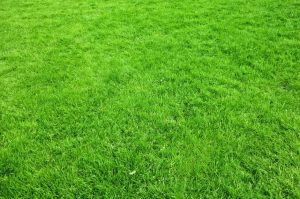Clover, a common sight in Australian lawns, often leaves homeowners torn. While it offers benefits like drought resistance and natural fertilisation, its invasive nature can disrupt a pristine green lawn.
Many Aussies wonder: How can we tackle clover without harming our cherished grass?
Let’s delve into solutions suited for our Australian landscapes.
Overview of clover
Clover, a wildflower from Europe and Asia, has become familiar in many Australian lawns. Recognisable by its shamrock-like foliage, clover can bloom with white, pink, or purple flowers. While it’s often considered a weed due to its rapid spread in lawns and gardens, it’s not without its benefits.
In Australia, the most common types of clover are:
- Red Clover (Trifolium pratense)
- White Clover (Trifolium repens)
These plants function as stolons, meaning they have underground stems that spread through the soil, allowing new plants to grow from these stems. This growth pattern enables white clover to quickly establish itself in areas where it hasn’t been previously cultivated.
Clovers are also legumes, which are known as nitrogen fixers. They can take nitrogen from the air and convert it into nutrients for themselves and other plants through nitrogen fixation or rhizobialism. This makes them beneficial for soil health, but their invasive nature can challenge those aiming for a clover-free lawn.
While clover can be beneficial, providing soil moisture, suppressing other weeds, and attracting beneficial insects like bees, its rapid spread can be a concern for many Australian gardeners aiming for a pristine lawn.

Reasons for clover infestation
Clover’s presence in a lawn often signals certain conditions and habits that might unintentionally encourage its growth. Let’s delve into the primary reasons why clover might decide to make your lawn its home:
- Soil conditions: One of the most telling signs of a clover infestation is the soil’s nitrogen levels. Clover thrives in low-nitrogen environments. Clover sees this as an open invitation if your lawn’s soil is deficient in nitrogen. This is because clover, a legume, can produce its own nitrogen through nitrogen fixation, giving it an edge in nutrient-poor soils.
- Watering habits: Overwatering or consistent watering can lead to strong grassroots and patches of thin grass. These patches become prime real estate for clover to move in. Conversely, clover can also thrive in drought due to its deep root system, making it more resilient than some grass types.
- Mowing frequency and height: Regular mowing at a high setting can help grass outcompete clover by allowing the grass to shade the clover, preventing it from getting the sunlight it needs. However, mowing too short or infrequently can weaken the grass, giving clover an advantage. Remember, clover stays low to the ground, so if the grass is cut too short, clover can easily get the sunlight it craves.
- Natural soil compaction: Soil can become compacted over time, especially in high-traffic areas. Compacted soil can hinder grass root growth, making it harder for the grass to access nutrients and water. With its hardy nature, clover can take advantage of these compacted areas where grass struggles.
Ultimately, a clover takeover is often a sign that the lawn is out of balance in one way or another. Addressing these underlying issues can not only help in reducing clover but also in achieving a healthier, more resilient lawn.
Risks of keeping clover in your lawn
While clover can coexist with grass and even offer some benefits, allowing it to grow unchecked can pose several challenges for homeowners:
- Competition with grass: Clover thrives in poorly fertilised lawns, especially where the soil’s pH is too high or low for grass to grow healthily. This means that clover can outcompete and overshadow your lawn grass, leading to an uneven appearance.
- Attracts pests: The white clover flowers can attract bees, which might concern families with kids playing in the yard. Additionally, some pests might be drawn to clover patches.
- Takes over the lawn: Clover can proliferate and dominate your yard if unchecked. Its creeping stems and ability to germinate in favourable conditions mean small patches can quickly become large infestations.
- Challenging to remove: Once clover establishes itself, removing it can be tough. Some weed killers might not be effective against clover, especially broadleaf varieties.
- Aesthetic concerns: For those aiming for a uniform, velvety lawn, clover patches can disrupt the visual appeal. The difference in height and colour between grass and clover can make a lawn look unkempt.
- Indication of lawn health issues: A significant presence of clover can indicate your lawn is not in its best health. It might indicate issues like nitrogen deficiency or soil compaction.
While clover isn’t inherently bad, its unchecked growth can lead to challenges for homeowners aiming for a pristine lawn. Addressing the root causes of clover infestation and taking preventive measures can help maintain a healthy, clover-free lawn.
Methods to kill clover without killing grass
Clover can be a persistent invader in lawns. Still, with the right strategies, targeting and eliminating clover without harming the surrounding grass is possible. Here’s an overview of various methods to keep your lawn clover-free:
Fertilising
Proper fertilisation plays a crucial role in reducing clover growth. Clover thrives in lawns with low nitrogen levels. By ensuring your lawn has adequate nitrogen, you can give the grass the upper hand:
- Nitrogen boost: Clover indicates a nitrogen-deficient lawn. Boosting your lawn’s nitrogen levels can suppress clover growth. Products like Exceed Liquid Fertiliser can be especially effective during spring to ensure optimum nitrogen levels.
- Regular fertilisation: Keeping the soil healthy can prevent clover from flourishing. Depending on your lawn type, you can opt for granular, liquid, or slow-release fertilisers. Before applying, conduct a pH soil test to measure nitrogen levels and choose the appropriate organic or commercial fertiliser.
Mulching
Mulching is an effective way to suppress clover growth by blocking sunlight and making it harder for clover to establish:
- Organic mulch: Materials like straw, bark, or wood chips can be spread over the lawn. These suppress clover and decompose over time, enriching the soil.
- Inorganic mulch: Materials like rubber or plastic sheets can be used, especially in larger clover patches. However, they should be used cautiously as they don’t enrich the soil.
Cultivating
Regular soil cultivation can disrupt clover growth and promote a healthier lawn:
- Aeration: Aerating the lawn can help relieve soil compaction, allowing grass roots to penetrate deeper and access more nutrients, giving them an advantage over clover.
- Soil pH balancing: Clover thrives in soils with extreme pH levels. Regularly testing and adjusting the soil pH can create an environment where grass thrives and clover struggles.
Manual removal
For smaller infestations or for those who prefer a hands-on approach:
- Spot the clover: Identify areas of your lawn where clover is growing.
- Loosen the soil: Use a sharp knife or garden fork to gently loosen the soil around the clover.
- Uproot the clover: Grasp the clover at its base and pull upwards, ensuring you remove as much of the root system as possible.
- Dispose of the clover: Ensure you remove all uprooted clover from the lawn area to prevent it from re-establishing.
By combining these methods and maintaining regular lawn care practices, you can effectively manage and reduce clover infestations in your lawn.
Herbicides to kill clover and not grass
While beneficial in many ways, clover can become a nuisance when it overruns a lawn. Selective herbicides come to the rescue for those who wish to maintain a pristine grassy expanse. These herbicides are designed to target specific plants without harming others. In the context of our discussion, they can eliminate clover without damaging the surrounding grass.
Recommended herbicides
A couple of popular herbicide choices stand out for those grappling with clover infestations in their lawns. The Yates 2.4L BuffaloPro Weed’ n’ Feed Hose On Weed Killer is formulated to be gentle on buffalo grass while effectively targeting and eliminating clover. For other rundowns on weed and feed products, see our product roundup here!
On the other hand, Scotts Lawn Builder Bindii, Clover & Broadleaf offers a comprehensive solution against various broadleaf weeds, including clover. This herbicide is safe for lawns and operates by being absorbed through the leaves of the weeds, ensuring targeted elimination.
Both these products have garnered positive feedback for their efficacy in maintaining a clover-free lawn.
Application instructions
- Check the label: Before applying any herbicide, always read the label to ensure it’s safe for your specific type of grass.
- Avoid mowing before application: Most herbicides work by being absorbed through the leaves. Therefore, it’s recommended not to mow the lawn immediately before or after application. This ensures that the herbicide has a broad surface area to work on.
- Apply at the right rate: Applying the herbicide at the recommended rate is crucial. Over-application can harm even the plants you wish to protect. On the other hand, under-application might not effectively kill the clover.
- Watering: After applying the herbicide, water the lawn per the product’s instructions. Some products might require immediate watering, while others suggest waiting for a certain period.
- Safety first: Always wear protective gear, like gloves and goggles, when handling and applying herbicides. Keep pets and children away from the treated area until the herbicide has dried or as per the product’s safety guidelines.
Remember, while herbicides can be effective, they should be used as a last resort. Maintaining a healthy lawn through proper fertilisation, mowing, and watering practices can naturally keep clover and other weeds at bay.
Other organic weed control methods
For those who prefer a more natural approach to lawn care, there are several organic methods to control clover growth. These methods are environmentally friendly, safe for the surrounding plants, and beneficial for the soil.
Vinegar
Vinegar, particularly white vinegar, contains acetic acid, which can be a natural herbicide. When sprayed directly onto clover, it can cause the plant to dry out and die. However, being cautious is essential as vinegar can also affect surrounding plants. It’s best to apply it on a sunny day and directly onto the clover to minimise any damage to the grass.
Salt
Salt can be an effective organic weed control method. When applied to clover, it can dehydrate the plant and prevent its growth. However, there are potential risks:
- Salt can harm the surrounding grass and plants.
- It can lead to soil salinisation, making the soil unsuitable for future planting.
- It’s crucial to use salt sparingly and only in targeted areas.
Smothering
Smothering involves covering the clover patches with materials like cardboard, plastic sheets, or thick layers of mulch. This method deprives the clover of sunlight, causing it to die off. Over time, the covered area can be reclaimed and replanted with grass.
Corn gluten meal
Corn gluten meal is a natural pre-emergent that can prevent clover seeds from germinating. By applying it to your lawn, you can reduce the chances of clover sprouting. Additionally, corn gluten meal contains nitrogen, which can help fertilise the lawn.
Organic weed killer
Several organic weed killers are available in the market made from natural ingredients like citrus oil, clove oil, and vinegar. These products can target clover without harming the grass. Always read the label and follow the manufacturer’s instructions when applying.
While clover can be challenging, there are several organic methods to control its growth. You can maintain a healthy, clover-free lawn by choosing the right approach and being consistent in lawn care practices.
Best practices for controlling clover in Australia
Clover, while often seen as a beneficial addition to gardens due to its nitrogen-fixing capabilities, can sometimes overrun lawns, leading homeowners to seek ways to control its spread. Here are some of the best practices, both preventive and corrective, for managing clover in Australian lawns:
- Increase nitrogen levels: Clover thrives in low-nitrogen environments. Boosting the nitrogen levels in your soil can promote better grass growth, which naturally competes with clover. Fertilisers like Scotts Lawn Builder Premium and Richgro Cresco Lawn Fertiliser are recommended.
- Mow at a higher setting: Instead of mowing your lawn short, which can stress the grass and give clover an advantage, mow regularly at a higher setting. This allows the grass to grow stronger and naturally suppress clover.
- Hand removal: Clover can be easily pulled out for smaller infestations, especially when young and not well-established.
- Use broadleaf weed killers: Clover is a broadleaf weed, and specific herbicides are designed to target such weeds.
- Surfactants: When using herbicides, consider mixing in a surfactant. Surfactants reduce the surface tension on the leaf, allowing the herbicide to spread more evenly and improve its effectiveness.
Environmental considerations
Clover, especially white clover, offers several environmental benefits. It’s a nitrogen fixer, which means it can take nitrogen from the air and convert it into nutrients, enriching the soil. This reduces the need for artificial fertilisers. Additionally, clover attracts beneficial insects like bees and suppresses other weeds. While controlling its spread in lawns is essential, it’s equally crucial to recognise its positive impact on the environment.
Preventing future infestations
Once you’ve successfully rid your lawn of clover, the next step is ensuring it doesn’t make an unwelcome return. ‘
Prevention is always better than cure, and you can keep your lawn clover-free by adopting certain practices.
Mowing height and frequency
How you mow can significantly influence the health of your lawn and its susceptibility to weeds like clover. Here are some mowing tips to consider:
- Optimal mowing height: Maintain a mowing height of about 7-8 cm. Taller grass shades the soil, preventing clover seeds from getting the sunlight they need to germinate.
- Mow regularly: Regular mowing can help strengthen the grass and naturally suppress clover growth. However, avoid mowing too short as it can stress the grass and give clover an advantage.
- Keep blades sharp: Dull blades can tear grass, leading to a weakened lawn that is more susceptible to clover invasion. Ensure your mower blades are sharp for a clean cut.
Watering schedule
Watering plays a pivotal role in the health of your lawn and its resistance to weeds:
- Deep and infrequent watering: Instead of frequent shallow watering, water your lawn deeply and less often. This encourages grassroots to grow deeper, making them more resilient and competitive against clover.
- Morning watering: Water your lawn in the early morning. This allows the grass to absorb the moisture before the sun gets too intense and ensures the lawn dries before nightfall, preventing fungal diseases.
- Avoid overwatering: Overwatering can lead to shallow root growth and create conditions favourable for clover and other weeds. Ensure your lawn gets about 2.5 cm of water weekly from rainfall or irrigation.
By adhering to these mowing and watering practices, you can create an environment where your lawn thrives and clover finds it challenging to establish a foothold.
Final thoughts
A healthy lawn is more than just an aesthetic delight; it’s a testament to diligent care and understanding of its needs. Controlling clover growth while acknowledging its benefits ensures a balanced, vibrant green space. Remember, the key lies in addressing the clover and fostering an environment where your grass naturally thrives. By prioritising your lawn’s health, you pave the way for a lush, clover-controlled outdoor sanctuary.
FAQs about killing clover but not grass in Australia
Should I remove a clover from my lawn?
Clover can benefit lawns by enriching the soil with nitrogen and attracting pollinators like bees. However, if you prefer a uniform lawn appearance or are allergic to bee stings, consider removing it. Clover also offers a natural aroma when mowed and requires minimal maintenance.
What is the best product to kill clover but not grass?
The most recommended products for targeting clover without harming grass include Yates 2.4L BuffaloPro Weed’ n’ Feed Hose On Weed Killer and Scotts Lawn Builder Bindii, Clover & Broadleaf.
How do I get rid of clover on my lawn in Australia?
To eliminate clover in Australian lawns, use selective herbicides, adopt proper mowing and watering practices, and consider organic methods like vinegar or corn gluten meal.






